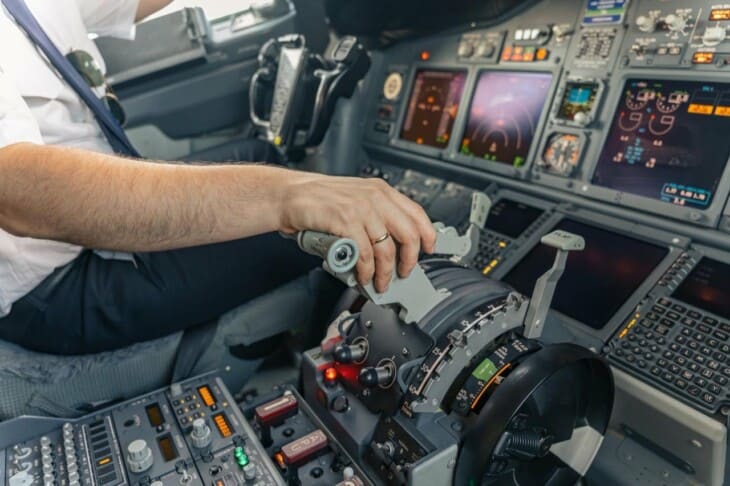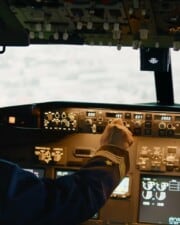People who can see colors don’t have to think about all of the barriers that color-blind people face. Not only can they get dressed without worrying about mismatched clothes, but on a more serious note, their vision won’t stop them from the jobs or hobbies they want to do. Many people who are color-blind have to give up their dreams of aviation.
However, is it really impossible to be a pilot if you’re color-blind? The answer is that it depends on the type of pilot’s license and the level of color blindness. Thanks to more precise testing, aviation governing bodies can identify if potential pilots have only a mild level of color blindness or if their vision impairment affects their ability to see colors relevant to flying. Other times, pilots can get provisional licenses to only fly under certain conditions.
Here are the guidelines for being a pilot, even for people who struggle with color blindness.
Can Pilots Be Color-Blind?
Until very recently, the answer to this was no because aviation agencies around the world would automatically decline someone’s application for a pilot’s license if that person were color-blind. However, changes in testing standards and technologies mean that now, being color-blind doesn’t automatically disqualify you from becoming a pilot.
There are three classes for getting a pilot certificate from the FAA: first, second, or third. A third-class license allows you to fly private planes and is the easiest to get if you are color-blind. You can get a medical certificate with some restrictions (more on that later) or take an alternative test to prove that your levels of color blindness are not high enough to impede your functioning as a pilot.
However, it is much more difficult to become a commercial pilot if you are color-blind, which makes sense because the responsibilities are much larger (most pilots of private planes don’t have to worry about the lives of hundreds of people if they get the color of a signal light wrong). To get a second-class commercial pilot license or a first-class airline transport pilot license, you need to pass color vision tests with flying colors.
If a person is mildly color-blind, that person can still become a pilot, although it will be much easier to become a private pilot than start working for a major airline as a commercial pilot.
Why Do Pilots Need to Have Color Vision?
You may be wondering: Why do pilots need to have color vision anyway? It’s not as if they navigate via the colors of the sky or that there are traffic lights when flying across the ocean.
Accurately identifying colors is actually an important part of being a pilot. The most important thing when navigating, particularly at night, is to identify signal lights, which can be blue, white, green, red, or yellow, as a pilot approaches the airport. With no other cues and just a split second to make a decision, the pilot needs to understand what the signal light is trying to say.
Another time when color vision is very important is during takeoff and landing. Airports often use different colored lights to signal different runways or taxiways. A pilot approaching an airport needs to land at the right runway; otherwise, there could potentially be a collision.
Finally, color vision is important for maintaining equilibrium inside the cockpit. Different lights in the cockpit are used to indicate the state of different instruments. A light will change color to indicate a change in flying conditions, especially on systems that use ILS lighting. Pilots also rely on charts for in-air navigation, and while it is possible to read charts by looking at the shapes and shading, many important places are marked out just by color.
With so many reasons why a pilot needs to see color to navigate the delicate and often deadly business of aviation, it’s no wonder that agencies have such strict rules around color blindness.
What Are Potential Restrictions on Your Medical Certificate?
Even if you have some level of color blindness, you can still get a medical certificate that allows you to get a third-class pilot’s license (getting a commercial license will probably be more difficult, if not impossible). However, sometimes the FAA can put restrictions on a certificate that indicate a pilot’s vision impairments only authorize them to fly under certain conditions.
The most common restriction for color-blind pilots is that they can’t fly at night. That makes sense because navigation at night is even more reliant on color due to the prevalence of different lights to signal approaches to runways and communication from traffic control towers.Another common restriction is that the pilot is not allowed to fly by color signal controls. This is not as severe a restriction as you might think because most traffic control towers have a working radio and don’t rely just on color signals. Some pilots take alternate tests to appeal restrictions on their medical certificates.
Related Posts













